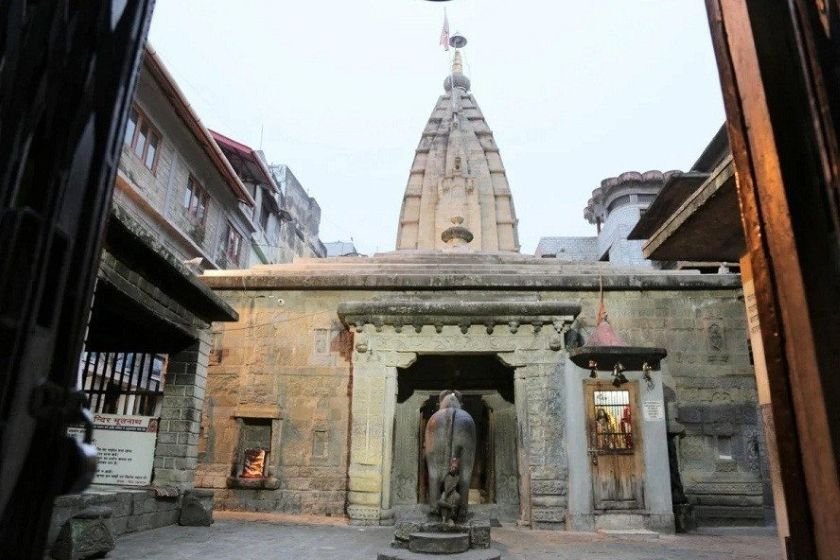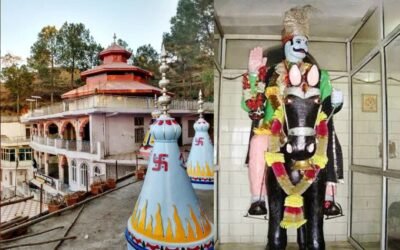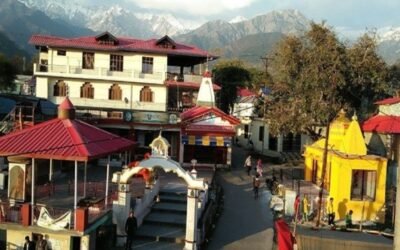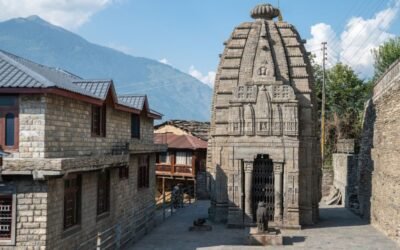Where Shiva’s silence echoes through centuries, and the town bows to its guardian
At the spiritual core of Mandi town, often called “Chhoti Kashi” for its abundance of Shiva temples, stands the Bhutnath Temple—a 16th-century marvel dedicated to Lord Shiva. Built in 1527 AD by Raja Ajbar Sen, this temple is not only one of the oldest in the region but also the epicenter of the grand Mandi Shivratri Mahotsav, where hundreds of hill deities converge in divine celebration.
🌄 Location & Accessibility
- Location: Bhutnath Street, Mandi Town, Himachal Pradesh – 175001
- By Road: Centrally located in Mandi; easily accessible by foot, taxi, or local bus
- By Rail: Joginder Nagar Railway Station (~55 km)
- By Air: Bhuntar Airport (~60 km) or Chandigarh Airport (~180 km)
- On Foot: Located in the heart of the old bazaar, near the Ghanta Ghar (Clock Tower)
🕉️ Deity & Worship
The temple is dedicated to Lord Shiva, worshipped here as Bhutnath, the Lord of Spirits. According to legend:
- A cow was seen offering milk to a stone in the forest, which turned out to be a self-manifested (Swayambhu) Shivlinga
- Raja Ajbar Sen had a divine dream, directing him to excavate the site and build a temple
- The idol was unearthed, and the temple was constructed on that very spot
Devotees offer bilva leaves, milk, and ghee lamps, and the temple is especially revered for its protective energy and spiritual potency. Rituals include Rudrabhishek, chanting of Shiva Stotras, and lighting of the havan kund in the main mandap.
🏛️ Architecture & Setting
The temple is a classic example of Shikhara-style architecture, featuring:
- A stone sanctum with a towering spire, flanked by carved pillars
- Sculptures of Shiva, Parvati, Nandi, Bhairon, and Hanuman adorning the walls
- A double-arched entrance, with Nandi facing the deity
- A havankund and ancient musical instruments preserved inside
The temple’s weathered stone and timeless aura make it a living relic of Mandi’s royal and spiritual legacy.
📜 Cultural & Historical Significance
- The temple was built when the capital of the Suket kingdom shifted from Bhiuli to Mandi
- It is the starting point of the Mandi Shivratri procession, where Raj Madhav Rao, the presiding deity of Mandi, visits Bhutnath before leading the week-long festival
- The temple is considered the spiritual heart of Mandi, and its daily aartis and rituals are attended by locals and pilgrims alike
🎉 Festivals & Celebrations
- Mandi Shivratri Mahotsav (February–March): A 7-day celebration with devta processions, folk music, and cultural performances
- Tararatri to Shivratri: The Ghritkambal Shringar tradition, where butter is sculpted into forms of Shiva on the Shivlinga each day
- Daily Worship: Morning and evening aartis, incense offerings, and chanting of Rudram and Shiva Sahasranama
🏞️ Nearby Attractions
- Triloknath Temple: A rare shrine of the three worlds
- Panchvaktra Temple: Where Shiva is worshipped in his five-faced form
- Rewalsar Lake: A sacred site for Hindus, Buddhists, and Sikhs
- Tarna Devi Temple: A Shakti shrine atop a hill overlooking Mandi
🙏 Spiritual Experience
The Bhutnath Temple of Mandi is not just a shrine—it is the pulse of a town that breathes Shiva’s name, a place where stone remembers dreams, and rituals echo through time. As you step into its sanctum, with the scent of incense and the murmur of mantras, you feel the presence of a god who watches over the valley with quiet strength. It is a temple where history kneels, and the **soul rises in the shadow of the spire.




